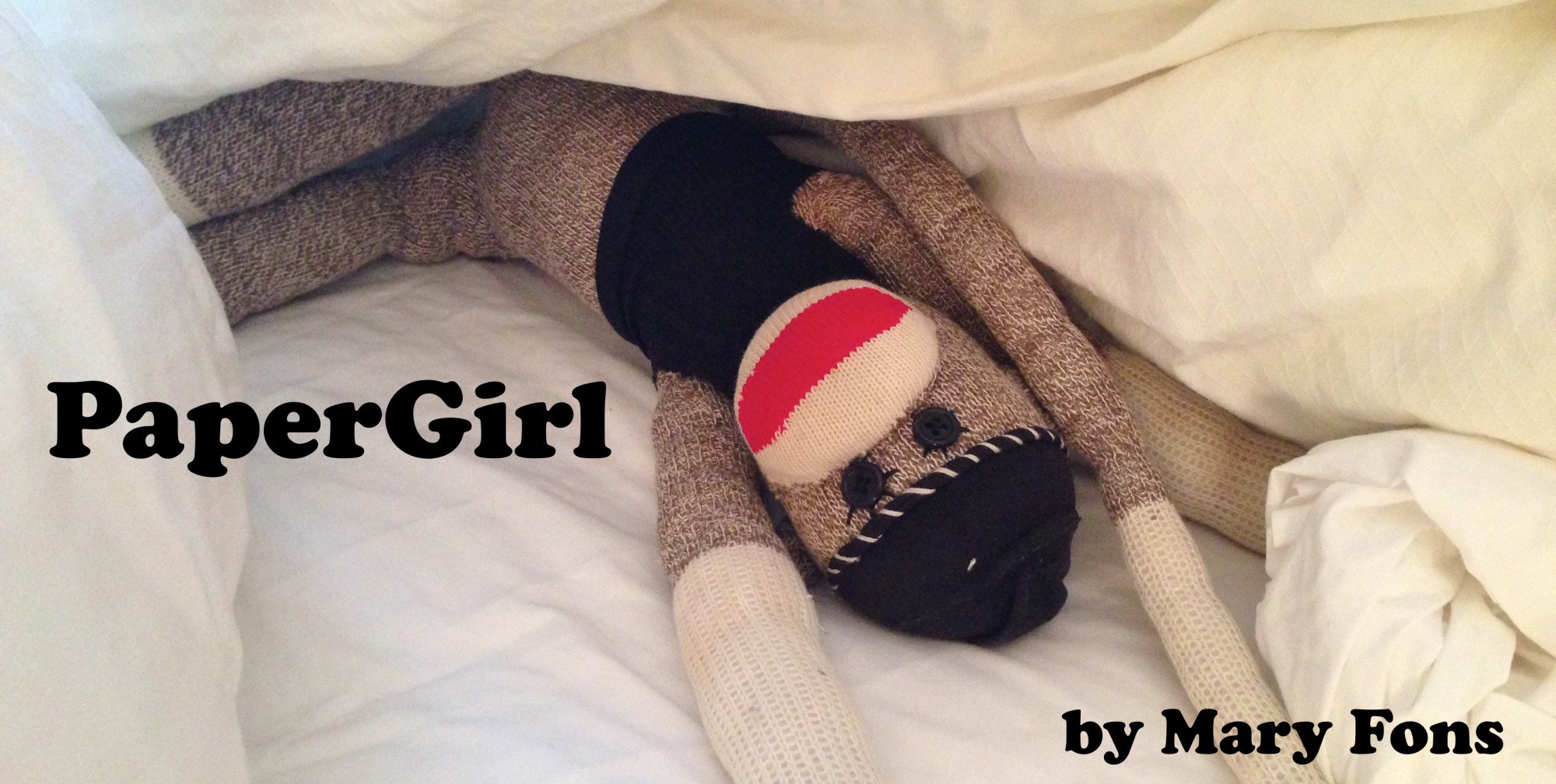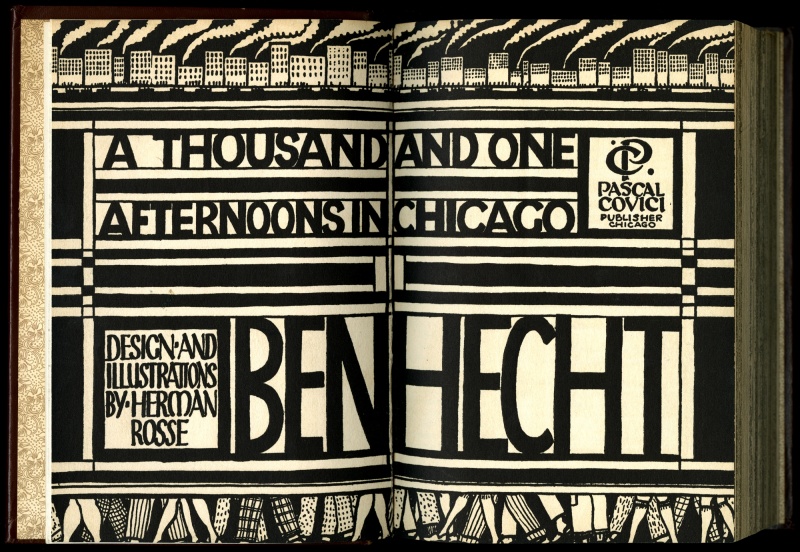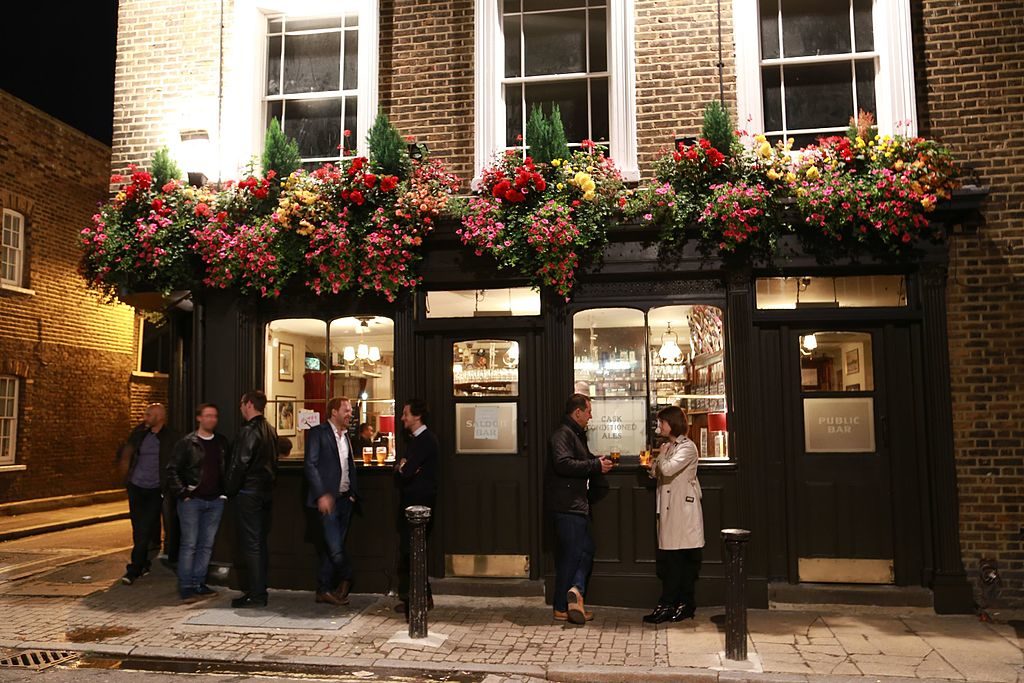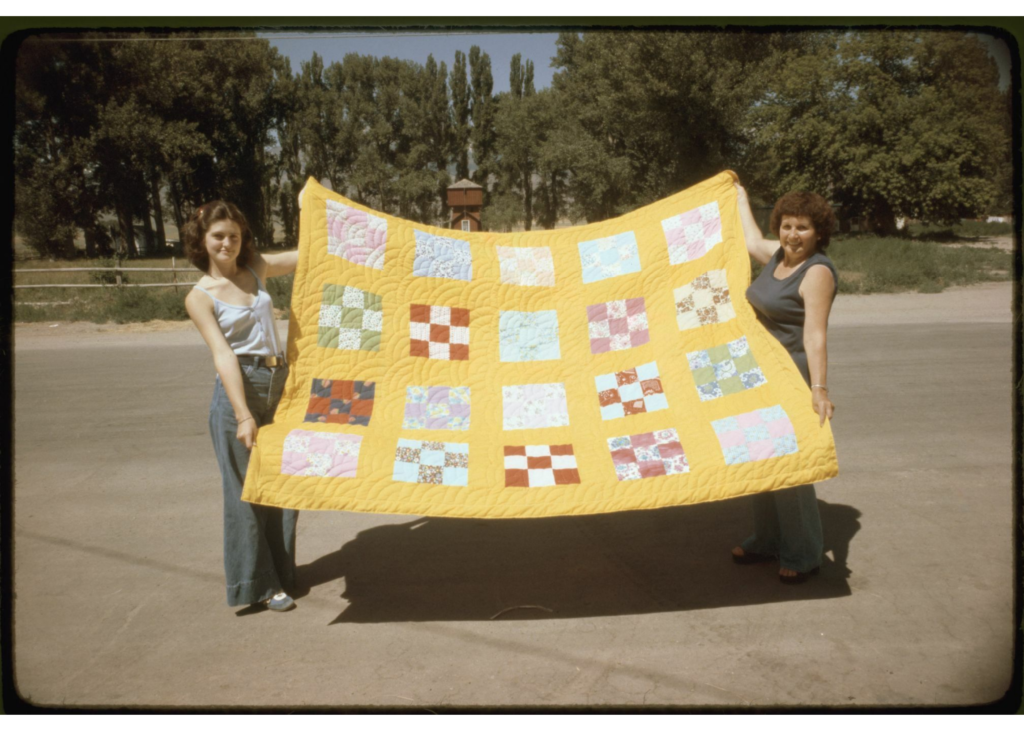


Today, a book interfered with all the work I was supposed to do. I’ll have to get up very early in the morning to catch up, but I don’t care. There was nothing I could do. Today, there could be nothing in the world — thank God — but this book, the delicate snowfall, and the pub where I sat, in the window, reading for two hours. The barstool I selected was inside Miller’s Pub, est. 1935, a Chicago institution, shielded and admired by the el at Wabash and Madison.
The book, A Thousand and One Afternoons in Chicago, started as a column in the Chicago Daily News 1920s. The author, Ben Hecht, is a name some of you might recognize, but if you do, I’ll bet it’s because Hecht achieved screenwriting stardom in Hollywood in the 1940s, writing or doctoring scripts a whole bunch of classic films. But before he decamped for Hollywood, Hecht was a dyed-in-the-wool Chicago newspaperman. He started writing for the dailies here when he was just 15, and he was good at what he did. What he did was write well about stuff that happened in the city he dearly loved.
Some years before the column began, Hecht left the News to work in publicity. He wanted to make more money and get away from the grind of reporting round the clock, so he went for it. He hated the publicity business, though, and was quickly miserable. His editor wanted him back and had an idea of how to get Hecht and keep him interested. He asked Hecht if he’d like to write a different sort of column for the News, one that explored the people of the city, but this time with a decidedly narrative tone. Hecht could interview people as he usually would, but then, rather than file a Q&A or a “This happened and this happened” piece of reportage, he’d have license to make the vignettes almost … poetic.
For years. In the preface to the 1922 book containing dozens of these “afternoon” characters — this is the book I couldn’t put down this afternoon — I learned that Hecht loved writing this new column so much, he’d do it when he was sick, tired, traveling, depressed, etc. He called the column “A Thousand and One Afternoons in Chicago” (a Scherezade riff, obviously) and he filed a column every day.
The humanity in these pieces is almost agonizing. Page after page of poignant, funny, achingly true portraits await you as the author tells Chicago through its people: prostitutes, auctioneers, homeless people, businessmen, shop girls, tattoo artists — this is all in the early 1920s, remember, but every single word is as true today as it ever was. People lose jobs and lose their families, they hope and dream, they forgive — sometimes they die, too. I was crying at the bar, trying to hide my face from the nice couple sitting to my left who were in Chicago for a nice weekend. I’m glad they didn’t ask me what I was reading; I would’ve rhapsodised and scared them away.
The book is funny and beautiful and I want to share an excerpt with you.
If you know me, you know I love Michigan Avenue. I walk up that grand boulevard and walk it all the way back down as much as I can and much more lately, since some days I just don’t know what to do with myself. On those days or any day besides, Michigan Avenue, from 9th Street to Delaware is my spinal column and it keeps me upright. So, imagine my rapture when I turned the page of Afternoons to find Hecht vignette about my street that was so right, so brilliant, so true, big, fat tears plopped onto the page as I read. There is no comfort like the comfort that comes when you see that you are known by someone who knew you before you were born.
Here is an excerpt from the “Michigan Avenue” piece from A Thousand and One Afternoons in Chicago, by Ben Hecht, 1921.
I have squandered an afternoon seduced from labors by this Pied Piper of a street. And not only I but everybody I ever knew or heard of was in this street, strutting up and down as if there were no vital projects demanding their attention, as if life were not a stern and productive routine.
[There] was no sign, no billboard to inspire me with a sense of duty. So we strutted—the long procession of us—a masquerade of leisure and complacency. Here was a street in which a shave and a haircut, a shine and a clean collar exhilarated a man with a feeling of power and virtue. As if there were nothing else to the day than to decorate himself for the amusement of others.
I begin to notice something. An expression in our faces as we drift by the fastidious ballyhoos of the shop windows. We are waiting for something—actors walking up and down in the wings waiting for the their cues to go on. This is intelligible. This magician of a street has created the illusion in our heads that there are adventure and romance around us.
There are two lives that people lead. One is the real life of business, mating, plans, bankruptcies and gas bills. The other is an unreal life—a life of secret grandeurs which compensate for the monotony of the days. Sitting at our desks, hanging on to straps in the street cars, waiting for the dentist, eating in silence in our homes—we give ourselves to these secret grandeurs. Day-dreams in which we figure as heroes and Napoleons and Don Juans, in which we triumph sensationally our the stupidities and arrogances of our enemies—we think them out detail by detail. Sometimes we like to be alone because we have a particularly thrilling incident to tell ourselves, and when our friends say good-by we sigh with relief and wrap ourselves with a shiver of delight in the mantles of imagination. And we live a charming hour through a fascinating fiction in which things are as they should be and we startle the world with our superiorities.
This street, I begin to understand, is consecrated to the unrealities so precious to us. We come here and for a little while allow our dreams to peer timorously at life. In the streets west of here we are what we are—browbeaten, weary-eyed, terribly optimistic units of the boobilariat. Our secret characterizations we hide desperately from the frowns of window and the squeal of “L” trains.
But here in this Circe of streets the sun warms us, the sky and the spaces of shining air lure us and we step furtively out of ourselves. And give us ten minutes. Observe—a street of heroes and heroines …
The high buildings waver like gray and golden ferns in the sun. The sky stretches itself in a holiday awning over our heads. A breeze coming from the lake brings an odorous spice into our noses. Adventure and romance! Yes—and observe how unnecessary are plots. Here in the Circe of streets are all the plots. All the great triumphs, assassinations, amorous conquests of history unravel themselves within a distance of five blocks. The great moments of the world live themselves over again in a silent make-believe.
The afternoon wanes. Our procession turns toward home. For a few minutes the elation of our make-believe in the Avenue lingers. But the “L” trains crowd up, the street cars crowed up. It is difficult to remain a Caesar or a Don Quixote. So we withdraw and our faces become alike as turtle backs.

I recently experienced the worst day of my life.
That’s saying something. I’ve lost people close to me. I’ve had organs removed, with complications. I went through a divorce. But this particular day was bad in a new way. That fresh hell was nowhere I wanted to be. When I can manage it, I’ll share with you as much as I can the series of events that lead up to the worst day of my life; for now, I’ll dump you right into the action, because the story I want to tell tonight begins there.
The worst day of my life culminated in a phone call. After that phone call, everything around me entirely drained of its color. Did you know the whole world is just a paint-by-numbers coloring book? On the worst day of my life, my pencil case, crayons, plastic sharpener, eraser — all of that was raptured, I guess. I was sitting in a white world with black lines and my body was shaking so hard I couldn’t have held a crayon if I wanted to.
The only thing I knew is that I had to leave the house, but I couldn’t like, be a person. I couldn’t manage carrying a purse, or charting a course, or having a plan. I always carry a purse. I always have a plan. I chart. But not on the evening of the worst day of my life. There in the endless, blank coloring book, I somehow got together my I.D. and the cash I had in my wallet. I put those things in the breast pocket of my brown wool coat, grabbed my phone and my keys, and left the building.
You know I love the Loop. “My endless Loop”, I call it, and it’s never let me down, so I went into the Loop and that’s where I walked. I don’t remember anything. Wait: I remember buying cigarettes. I know, I know. But don’t worry: I’m not smoking now. But on the worst day of my life, I definitely did. I walked and smoked in the Loop until I realized it was very cold and that I should go home, though I wasn’t sure why. What was there? Why not stay out?
When I turned south on Dearborn, the twinkly lights at the end of the street showed me the way. There. A plan. I was going to walk to those lights and have a drink at that nice-looking local pub that I had never gone into because … Well, I don’t know why I hadn’t ever been there. I just hadn’t. But I was going there now, alone, to drink something you need an I.D. to buy (check). That was the entire plan. It was unusual, which meant it fit with everything else that day, except this seemed like something I was choosing.
The pub was lively but not crowded. I took a seat at the bar. I ordered a shot of tequila and a beer.* Thus served, I did the salt-drink-suck thing (if you have to ask, you’ll never know) and just kind of stared at the television above the bar. My life didn’t feel real. My heart was wet concrete, dripping into my slush-soaked boots. There are times when you’re so happy, you “don’t have a care in the world.” But you can have the same feeling on the worst day of your life. You don’t have a care in the world because … who cares?
The man sitting next to me was alone, too. He was doing a crossword puzzle on his phone. He was wearing a stocking cap. He had a beard. He could’ve had a peacock nest on the top of his head and a clown suit on and I still would have done what I did because I didn’t have a care in the world, and what I did was turn to this person and say:
“Would you like to talk?”
He looked up at me.
“I’m not hitting on you. I’m not a weirdo. I just … You’re sitting alone and I’m sitting alone and we could have a conversation, you know, instead of doing the screen thing.”
He smiled. “I’d love to talk.”
So we did. We talked so well, in fact, that when we parted ways after about an hour and a half, we agreed that we should keep talking. And we have, which is pretty cool. And all I can say is that when you have the worst day of your life, you should definitely leave the house. Don’t take a purse. Don’t have a plan. Smoke cigarettes if you have to, but no matter what, tell the truth.
Tell the truth, and start from the beginning.
*Pro tip: If you’re ever buying me a shot, it’s tequila. Funny, since I’m a pasty Scots-Irish-Norwegian, but maybe my soul comes from someplace warmer. Also, Nick and I broke up over the holidays, in case you were wondering.

I recently attended an unconventional conference — an “unconference”, as they call it.
The event was like nothing I had ever experienced and fostered both intellectual bliss and psychological discomfort. Thankfully, the bliss eclipsed the agony — but it was a close call there for a minute. Would you like to hear more? Excellent, because I have prepared more.
The conference was hosted by Google and some other very Google-y companies with which I am intimately familiar, but solely as a consumer. Before the conference, such companies were essentially faceless to me. I don’t have a cousin that works at Facebook, for example. I didn’t go to kindergarten with Elon Musk — and thank goodness, because I know he would’ve eaten my paste!
This year marked the 11th year of this thing. The 350 people who attended hopped on planes and trains and came from all over the country to get to Google’s Chicago headquarters. But those 350 people weren’t just any 350 people, oh ho! No, no: We were all on the list. Oh, yes. There was a list. Because whatever you want to call it — conference, unconference, think tank, nerd camp, slumber party for geeks — is by invitation only. First, you have to be nominated by someone who has attended in the past, then you have to apply, then you have to be selected. If all that works out, you can get your groovy nametag and it’s on like Donkey Kong.
Speaking of Donkey Kong: I think I met the guy who invented Donkey Kong.
It’s possible. Because that’s the kind of person who goes to this thing. The whole place was swarming with top brass in the fields of gaming; government digital operations; linguistics; neuroscience; the internet … There was a guy who owns and operates a yo-yo empire. I met a woman who makes the Chicago Botanical Garden the Chicago Botanical Garden. I was in a discussion group with the host of a very, very, very popular network reality television show. I attended a talk given by the UK’s leading war correspondent. I went to an “Ask Me Anything” session about the Chicago transit system hosted by the guy who is literally in charge of Chicago’s transit system. In the mix were scholars. Writers. Thinkers. Artists. Doctors. Comedians. Lawyers.
And one … whatever I am.
There were numerous occasions when I had to swallow hard and try not to cry. And I know, I know: You’ll say that I was in the room because I qualified to be in the room! Logically, I knew that. But emotionally I couldn’t get there. No matter how you slice it — and though every single smartypants person was so friendly and awesome — these people were intimidating. Many of them are also exceedingly wealthy, so there was that inadequacy going on, too. I wasn’t in my comfort zone, sister. I was in my “uncomfort” zone which does seem appropriate.
In a few different sessions, I said things that just didn’t come out right. Afterward, I would tell myself, “Fons, don’t talk anymore, just listen in the next one” but then I’d go to the next session and get so excited about the topic that I’d raise my hand and say something and that sounded stupid, too. The session I lead went okay, but okay wasn’t enough: I wanted it to be amazing. At lunch or in the hallways between sessions, I was nervous. Surely there was lipstick on my teeth. Surely I had toilet paper sticking to my shoe. I bit my cuticles so bad I drew blood — twice. I had to put a band-aid on, which made me feel like a gross weirdo with a band-aid on.
In my defense, it was a lot of stimulation and sensory overload. The conference is objectively stressful and the organizers warned all the first-timers that it would be. When I shared with my “homeroom” leader that I was freaking out, she couldn’t have been nicer and confessed that the first year she came, she left after the first day! However fancy-pants it may be, being thrown into a room with 350 strangers is a lot for anyone, she said, especially if you work from home or with a small team. I told her how I was in a pretty fragile state, too, from some life stuff, and that maybe that was affecting me. She gave me a hug and grabbed my hand and we went and got schmancy coffee from the coffee bar. Things got way better after that. I learned more in three days than I thought was possible.
And the stress is a distant memory, now. I’m eager to volunteer to host the monthly salons local attendees put together between conferences, and, if I get to go again next year, I’ll be the first on the list to volunteer to help out newcomers. As soon as I get my nametag on, I’ll wing my way through the crowd, eagle-eyed, looking for any girl with a fresh band-aid.

I’ve been wanting to ask you something for a long time, so it’s exciting to finally get the opportunity. It’s a three-part question:
Show me the rounded-edge Kodak prints, the polaroids, the slides — I love it all. If it’s got your personal quilt history in it, I’m interested, and I want you to tell me about the pictures, too: Who are the people? Where were you? What year was it? And what was she thinking with that haircut? Things like that.
Here’s an important note: While I’m interested in quilt history from the big bang right on up to five minutes ago, I’m specifically looking for quilt-related photographs of people with their quilts taken from roughly 1940-1990.
That 50-year span is where I’m spending major research time for a number of projects. I can comb through this or that archive, and I frequently find things in databases and so forth, but asking you to share pictures is way better because you’re a real-life person who can, you know, talk to me. A citation can’t talk. Besides, I think this is going to be super fun.
I’m trying to think of things you’ll ask so that I can answer you ahead of time. Let’s see how I do:
I have pictures of all the quilts I ever made! When do I start??
Wait, wait! I love that you documented all the quilts you made but I am not looking for pictures of quilts by themselves. I am looking for pictures of people with their quilts. Making them, showing them, sleeping under them, presenting them, hiding under them, waving them like flags, cuddling up in them, helping sew them, using them for oil rags in the garage — all of that, any of that and more. Picture of you and the quilts in your life. That’s what I’m after. The photo up top is the kind of thing I’m talking about. Does this make sense?
Got it. Now, reassure me what you’re doing with these. These photos are my property.
I want to look at these photos for my own edification and research. If there comes a time when I say, “This photo is incredible and I would like to use it for [insert project here]”, then I will contact you and we will both enjoy filling out many forms. Consider these words our very public, very binding contract: Whatever photos you share with me go no further unless we go further together. Look, it’s possible a hacker could get into my computer and start flinging pictures of you sewing in ’72 with Jan and Marla at the old house on Sycamore Street, but this would be out of my control. I do not think anyone will do this.
I’m so excited! I’ve been waiting for years for someone to ask to see my “Krazy Kwiltin’ Daze” photo albums. I have scanned a lot of my photos already. Where do I send the pictures?
If there’s a tidal wave of photos (!) there will need to be another system, but for now, scan your pics and email me at mary @ maryfons . com. Attach as many as you like. You can put “Photos” in the subject line. Alternately, you may put in the subject line the kind of ice cream you like best. I’d like to look at an email box full of ice cream flavors, wouldn’t you? I encourage you to use this option.
But, but … I don’t have a scanner. Or maybe I do, but I don’t know how to use it. I have so many photos! I hate technology. Now what?
I was afraid you’d ask this. I hate technology, too. I think you have to ask someone at a Walgreen’s or a FedEx-Kinko’s to help you? I suppose it would work to take a picture of a picture and email it to me from your phone. But this might be a miserable task, since I’m asking for information along with the picture. Speaking of information …
What kind of information do you want? I forgot to put the milk away last night, so I hope you don’t expect me to remember names and exact dates on a lot of these pictures.
I left the milk out, too. Just do your best. Try to identify the people in the picture. Tell me where the photo was taken. If anything, do try to remember the year, even if it’s a rough guess. But don’t sweat this: I’m not doing genealogical research; this isn’t forensics. Just gimmie the gist.
The idea of this makes me happy, but I fear that I will feel sad while I’m doing it. It makes me not want to do it.
I know. It’s hard to go through old photos, sometimes. People have passed away. Everyone 25 years ago was 25 years younger. Yes, nostalgia may have its way with you. It always has its way with me. Don’t do anything you don’t want to do. Stick those photos back in the drawer if it’s too weird. I’ll survive!
What else?
I have this fantasy of sitting and looking at humble photo after humble photo of people and their quilts during this timespan. I’m hoping I’ll see a picture of kids in the ’80s making a quilt fort; I’m prepared to drool over a photo of a sew-in at a college dorm; I’d love a black and white shot of a protest quilt of some kind; I’d just die and go to heaven if one of you sends me a picture with someone smoking while quilting, but this would surely be too good to be true.
Whatever you send, whatever you remember, thanks for being there.

I wasn’t kidding. About the Sunday Evening Post.
But on Sunday, I had to go to the hospital. You guys, I’m so sorry. I left in the early evening, right when I had planned to sit down with you for a nice fireside chat. I was so looking forward to it. All day, I was. Proof is in this very moment: I’ve just walked in the door to my home after so many days and what am I doing? Even before taking out the garbage, even before putting in a load of laundry. Even — prepare for astonishment — before making tea … I’m here. Right here.
I’m still here.
The Sunday Evening Post was late, but it was always coming.
Love,
Mary